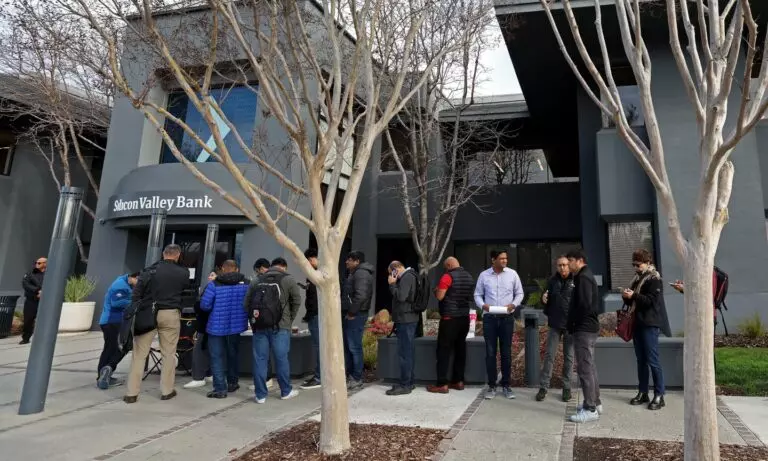Two banks collapsed on Friday. The federal government intervened to save them, but there is still uncertainty over what the future holds.
The federal government will guarantee the money of depositors at Silicon Valley Bank, which was shut down Friday following a bank run. Signature Bank in New York also went under after it collapsed Sunday. The U.S. Treasury Department and the Federal Reserve, along with the Federal Deposit Insurance Corp., announced Sunday that all deposits at both banks will be guaranteed, but not at taxpayer expense. The Federal Reserve and the U.S. Treasury Department informed depositors that they would have Monday access to their money.
According to the statement, the move was made to reduce systemic risk in the banking system and to boost public confidence. The federal government wanted to prevent a potential contagion of bank system collapses that could cause economic instability similar to the Great Recession in the late 2007-mid 2009.
According to the FDIC there have been 562 bank collapses since 2001. These are the first since October 2020 when Kansas-based Almena State Bank went out of business. Signature Bank and SVB were the largest bank collapses in history. Washington Mutual, which was a victim of the 2008 financial crisis, was the third. 1.
SVB’s collapse triggered a rapid decline in the markets on Friday. Markets were jittery Monday morning after the Fed’s joint announcement. This was a sign of high volatility in an uncertain financial environment. Stocks of banks, particularly regional ones, have plummeted.
Signature Bank and SVB collapse
The Fed stated in a joint news release that the U.S. banking system is resilient and built on a solid foundation. This was largely due to reforms made after the financial crisis, which provided better protections for the banking sector.
Not all reforms have been successful. Trump’s 2018 presidency saw Congress repeal Dodd-Frank Act regulations governing regional banks with assets below $250 billion. According to the FDIC, SVB’s assets were $209 billion at the time of its collapse. Senator Banking Committee Chair Elizabeth Warren (D-Mass.) cited rollbacks as contributing factors to SVB’s failure, saying that the decision decreased “both oversight and capital requirements span>
How did this happen? It was a bank ran, when depositors take out their money at the same time to avoid insolvency. Greg Becker, the CEO of SVB, sent shareholders a letter on Wednesday stating that SVB had suffered a loss of $1.8 billion from the sale U.S. Treasurys as well as mortgage-backed securities. Becker stated that the bank would raise $2.25billion to improve its finances. The bank’s announcement caused panic among customers who pulled $42 billion from their accounts on Thursday. SVB’s negative cash balance was $958 million by Friday morning. FDIC announced that it had taken control of SVB and created the Deposit Insurance National Bank of Santa Clara. (Disclosure: NerdWallet was also a banker with SVB prior to its closing. )
On Sunday, New York state regulators shut down Signature Bank. This lender was primarily focused on real estate and law firms, but had recently begun to focus on cryptocurrency. Signature was the victim of a similar bank run. Signature Bridge Bank N.A. was established by the FDIC.
The collapse of SVB without government intervention could have been devastating for large depositors. FDIC-insured deposits are only limited to $250,000, regardless of whether an account is individual or corporate. According to Bloomberg analysis of regulatory filings, more than 90% of deposits at SVB were not insured by FDIC. SVB was a bank of choice for entrepreneurs, venture capitalists, and tech companies. Some companies were concerned about their ability to pay payroll after Friday’s collapse.
Was it a bailout?
This is semantics. The federal government wants you to know that taxpayers are not responsible for this bailout. The three government agencies announced that the Deposit Insurance Fund would pay for the money in depositors’ accounts. The Deposit Insurance Fund is funded by fees charged to financial institutions and interest on government bonds.
In a Monday morning televised speech, President Joe Biden reiterated this sentiment: “No loss will be — and this is important — taxpayers will not bear losses.” I repeat: The taxpayers will not be responsible .”
Will the Fed raise interest rates again?
The Fed may ease its stance on interest rate increases due to bank failures. In his Senate testimony last week, Fed Chair Jerome Powell indicated that a 50-basis point increase in March’s rate decision was possible due to the Fed’s hawkish tenor.
However, the SVB/Signature failures have dimmed that outlook.
A widely reported analysis of the failures revealed that Goldman Sachs no longer expects the Fed’s March 22 rate hike and stated that they have “considerable uncertainty” about the path after March 22.
The CME FedWatch Tool indicated that there was a possibility of an increase next week, with a range of no and 25 basis-point increases.
What’s next?
Biden’s Monday message was intended to assure Americans about the strength and safety of the U.S. bank system. Biden stated that the bank’s management would be fired, and investors would not be protected. He also called for an exhaustive accounting of how these failed banks occurred. He called for Congress and the banking regulators, to improve the rules for banks in order to reduce the risk of further failures.
FDIC will help buyers of SVB and Signature Bank. The FDIC will also dispose of assets belonging to SVB that can be used in future dispositions.
